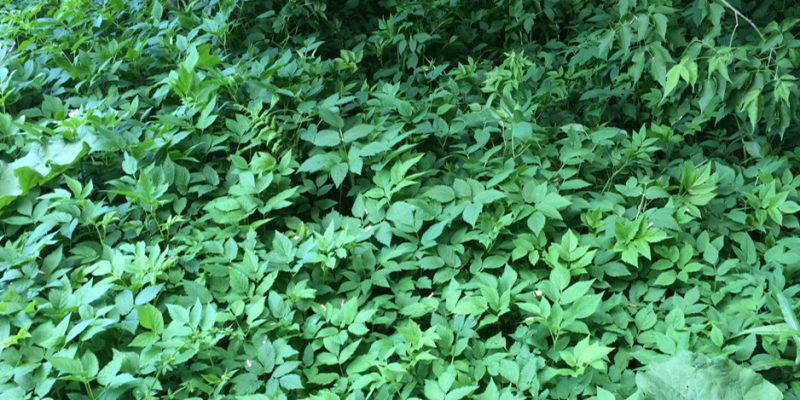
Invasive plants are an ongoing threat to the Gardiner community in many ways. First, they are a threat to ecological diversity and to a resilient, sustainable, healthy ecosystem. Secondly, invasive plants pose a major threat to agricultural production and profitability. Lastly, invasive plants can cause serious physical harm to humans.
Invasive plants come to the U.S. in a variety of ways, some with good intentions as food crops or ornamental plants. They seem to solve a problem or address an issue at the time. Others come accidentally, through food shipments or as hitchhikers on imported goods and products. These invasive plants can be beautiful, edible and useful, but the fact remains that they pose threats in many ways.
So what is to be done, now that they’re here? The answer: manage and destroy through vigilance and action. Many resources are available to assist in supporting these efforts, and some are listed at the end of this article. Roadways are a major means for the spread of invasive plants. Maintaining vigilance along the roadways and removing invasive plants at that point can help to stop the spread of these threats to your residence and other places. Another step is being careful about what is brought onto residential property and into public areas by you, your children or pets, and being watchful about what you, your children and your pets carry away, either intentionally or by accident. This includes plants purchased from stores, nurseries or mail order.
There will not be a time when invasive plants are “gone,” and control of one sort or another will require ongoing effort. In order to manage and destroy invasive plants, it is important to understand their processes of reproduction, as not all plants respond to the same tactics.
If the plant is difficult to destroy, stopping its spread is a major victory. Some can be manually pulled out; others will necessitate chemical controls (within New York State Law). Fire can end others, mowing for others and, for still others, scientists have identified insects that will specifically destroy them. Composting invasive plants is generally not a good practice.
Two of the more common invasive plants in our area are Purple Loosestrife and garlic mustard. Purple Loosestrife is the beautiful purple flowering plant that is now endemic throughout Gardiner. This plant is especially a danger to critical wetland areas and can form thick stands that eliminate food sources, nesting areas and cover for many animals.
Scientists have identified two types of insects that will either eat the leaves or the roots of Purple loosestrife, thus creating a biological control to its spread. A permit is needed from the Department of Environmental Conservation (DEC) to purchase and release these insects.
Garlic Mustard is an edible, (a delicious salad or pesto) invasive herb that has become a major threat to woodlands and wetlands. Once known, this plant, is quickly found in many places. Garlic mustard is an aggressive, “problem invasive,” as it will choke out all other vegetation in a forested area. It is alleopathic, emitting chemicals that inhibit and prevent the growth of other vegetation. Pulling the plant is relatively easy, but what is done next depends on the plant’s life stage. Please refer to the resources at the end.
Two invasive plants worthy of mention because of the danger they pose to people, are Giant Hogweed and Wild Parsnip. Giant Hogweed looks like Queen Anne’s Lace, but on steroids. It can grow up to 14 feet tall. According to NY DEC, its sap, in combination with moisture and sunlight, can cause severe skin and eye irritation, painful blistering, permanent scarring, and blindness. The DEC has identification materials and a special hotline to call if you believe you have spotted this dangerous plant.
Wild Parsnip has serrated leaves and yellow flowers. According to the DEC, Wild Parsnip sap contains chemicals which can make skin more vulnerable to ultraviolet light. Brushing against or breaking the plant releases sap that, combined with sunlight, can cause a severe burn within 24 to 48 hours. This reaction, known as phytophotodermatitis, can also cause discoloration of the skin and increased sensitivity to sunlight that may last for years. Gardiner has many more invasive plants worthy of attention. Our community can work together to stop the spread of these invasive plants and the damage that they cause to the ecosystem, agriculture, animals and people.
Resources:
- The NYS DEC puts out a color brochure listing invasive plants and assisting with identification through color photos.
- The New York Invasive Species Network produces fact -sheets addressing invasive plants, insects and animals in regards to NY Agricultural Production.
- The Ulster Cornell Extension Service and the US Department of Agriculture also offer useful information. All of these agencies and their offerings can be looked up online.

One comment